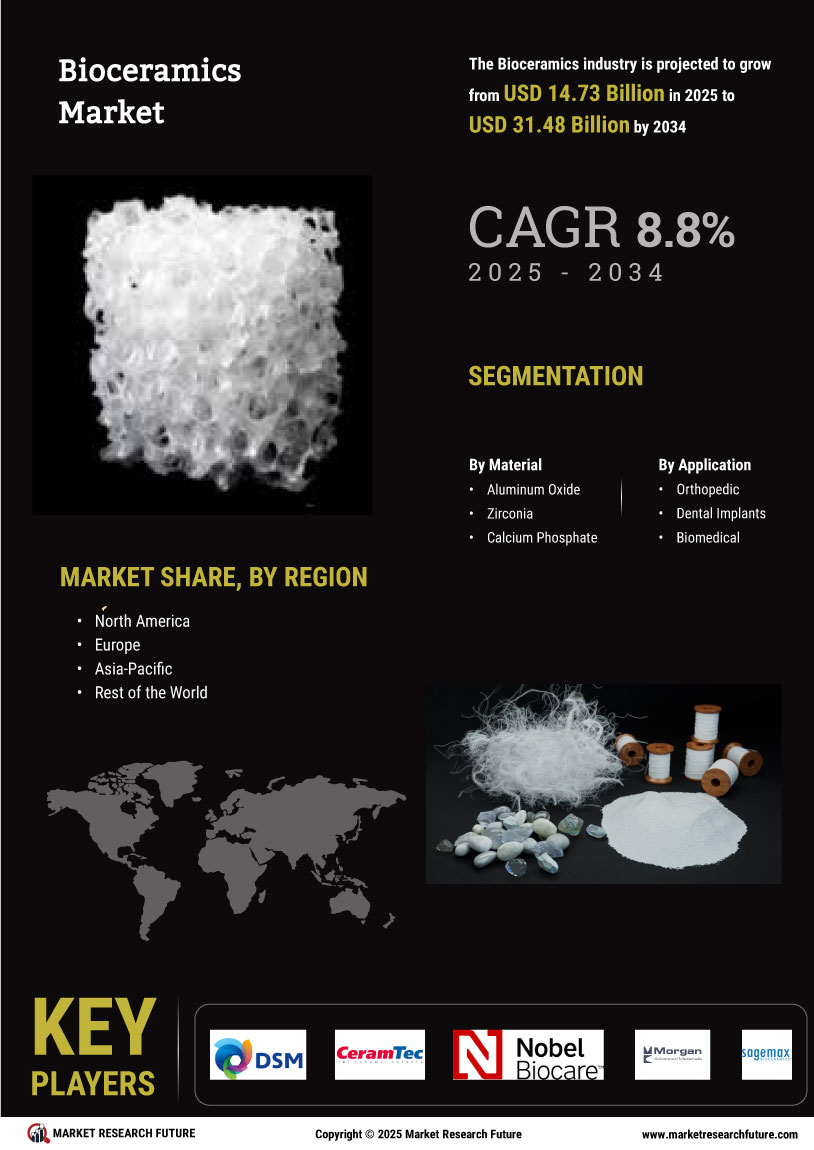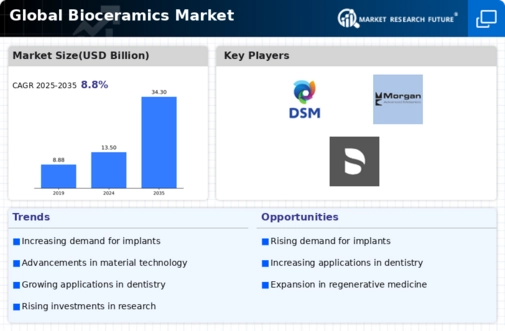Leading market players are investing heavily in research and development in order to expand their product lines, which will help the Bioceramics Market, grow even more. Market participants are also undertaking a variety of strategic activities to expand their footprint, with important market developments including new product launches, contractual agreements, mergers and acquisitions, higher investments, and collaboration with other organizations. To expand and survive in a more competitive and rising market climate, Bioceramics industry must offer cost-effective items.
Manufacturing locally to minimize operational costs is one of the key business tactics used by manufacturers in the Bioceramics industry to benefit clients and increase the market sector. In recent years, the Bioceramics industry has offered some of the most significant advantages to medicine. Major players in the Bioceramics Market, including CeramTec GmbH, Kyocera Corporation, Zimmer-Biomet Holdings Inc., HC Starck GmbH, Saint-Gobain Ceramics & Plastics Inc., and NGK Spark Plug Co. Ltd. and others, are attempting to increase market demand by investing in research and development operations.
Straumann Group is a Swiss firm headquartered in Basel, Switzerland, that manufactures dental implants and specializes in associated technology. The company conducts research, develops, manufactures, and sells dental implants, instruments, biomaterials, CADCAM prostheses, digital equipment, software, and clear aligners for replacement, restorative, orthodontic, and preventative dentistry. The Straumann Group also provides training and instruction to the dental profession around the world in partnership with the International Team for Implantology (ITI) and the Instituto Latino Americano de Pesquisa e Ensino Odontológico (ILAPEO). Its products and services are offered in over 100 countries via a large network of distribution subsidiaries and partners.
In 2020, Straumann, a renowned producer of dental implants, has announced the release of the Straumann® PURE Ceramic Implant, a novel bioceramic dental implant. The implant is constructed of a biocompatible high-performance ceramic material that provides great osseointegration. The implant is intended to provide patients with dental implants with a metal-free and aesthetically pleasing option.
3D Systems, based in Rock Hill, South Carolina, designs, manufactures, and sells 3D printers, 3D printing materials, 3D scanners, and a 3D printing service. The company develops product concept models, precision and functional prototypes, tooling master patterns, and production parts for direct digital manufacturing. It fabricates physical products utilizing proprietary techniques and input from computer-aided design and manufacturing software, as well as 3D scanning and sculpting technologies. 3D Systems' technologies and services are used in numerous industries, including aerospace, automotive, healthcare, dental, entertainment, and durable goods, during the design, development, and production stages.
In 2019, 3D Systems announced the creation of bioceramic bone implants created in 3D using their Figure 4® 3D printing technology. The bioceramic implants are constructed of a unique bioceramic substance and are intended to enhance bone regeneration. When compared to typical metal implants, which can cause discomfort and agony, the implants are predicted to provide superior patient results.



 Source: Secondary Research, Primary Research, Market Research Future Database and Analyst Review
Source: Secondary Research, Primary Research, Market Research Future Database and Analyst Review









